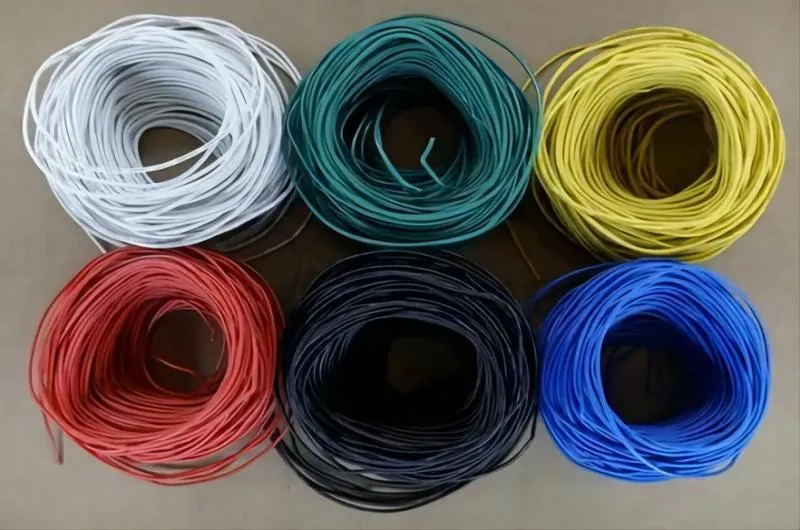BY  GENN
GENN
2024/03
Blog
The Difference Between Cored Wire And Core-Spun Sewing Thread
The Difference Between Cored Wire And Core-Spun Sewing Thread
- Formulation
Cored Wire: A core substance, such as a solid or powdered flux, alloy, or other additive, is usually enclosed in a metal sheath. The metal sheath encloses the core material, which offers certain qualities and functions for metallurgical treatments, welding, and other industrial uses.
Core-Spun Sewing Thread: A continuous filament core is encircled by staple fibres to create a single yarn with improved strength, durability, and other physical properties. The strength, homogeneity, and resistance to stretching of the thread are enhanced by the core material, which is frequently cotton or polyester. This leads to better stitch quality and less puckering in the seams.
- Utilization
Cored Wire: When certain alloying, deoxidizing, or refining agents are needed to change the properties of the base metal, cored wire is mostly utilized in welding applications, metallurgical treatments, and other industrial processes.
Core-Spun Sewing Thread: Denim, knitwear, and technical textiles are just a few of the materials that are sewn together using core-spun sewing thread in the textile and garment industries. With its exceptional strength, longevity, and stitch quality, it may be used for a variety of sewing tasks.
- Production Method
Cored Wire: Using a specialized extrusion technique, the core material is encapsulated within a metal sheath to ensure uniform distribution and constant performance throughout the application. This process produces cored wire.
Core-Spun Sewing Thread: A continuous filament core is encircled by staple fibres to create a yarn with improved strength and other desired characteristics. To produce the required thread properties, the continuous filament and core material are integrated during the manufacturing process.
What Is the Difference Between Core-Spun Sewing Thread and Ordinary Sewing Thread?
Core-spun sewing thread and regular sewing thread differ in some structural and physical elements, which are primarily evident in the following areas:
- Organization: Two threads of distinct materials make up core-spun sewing thread: a soft core thread and a durable outer sheath. The layered structure of the core thread and outer sheath is absent from ordinary sewing threads, which are typically composed of a single material or several thread strands.
- Strength and durability: Because of the structure of its core and sheath, core-spun sewing thread often has high strength and durability. The things that are sewn are more robust and long-lasting, and it can tolerate higher stress. The strength and longevity of regular sewing thread are comparatively low.
- Wear resistance: Core-spun sewing thread typically has an outer sheath composed of a durable substance that offers good resistance to wear. This lessens line breakage and wear by enabling it to endure friction and outside forces for an extended period of time. When it comes to resistance to wear and tear, regular sewing thread is comparatively weak.
- Adaptability: Core-spun sewing thread offers great adaptability because the outer sheath and core thread have distinct characteristics. It can be used to a variety of materials and fabric kinds, including thin and thick textiles. The versatility of regular sewing thread is somewhat limited.
- Cost: Core-spun sewing thread has superior performance and structure, thus its manufacturing costs are often greater than those of regular sewing thread. As a result, core-spun sewing thread is probably going to be somewhat expensive.
In summary, core-spun sewing thread is more versatile and has greater strength, durability, and wear resistance than regular sewing thread. Nevertheless, because of its increased price, the decision must be based on the requirements and spending plan of the particular sewing project.
What Materials Are Core-Spun Sewing Threads Made Of?
Typically, core-spun sewing thread is composed of the following components:
Material of the core wire: Typical materials for core wires are nylon, polyester, polyamide, and so forth. These fibre materials provide thread strength and longevity because to their high strength, abrasion resistance, and chemical resistance.
External covering material: There are several options for the external covering material, including polyester, nylon, and cotton. These substances are typically applied to the outside of the core wire to improve its wear resistance and smoothness, which facilitates thread end shedding and makes the wire easier to pass through fabric.
Coating material: To increase the abrasion resistance and waterproof qualities of certain core-spun sewing threads, an additional coating is applied to the outer covering material. Typically, a unique resin or polymer is used as this coating material.
Note that different brands and manufacturers may employ different combinations of materials in their core-spun sewing threads. The trademarks and specifications of the product can be used to understand the exact material composition.
What Are The Types Of Cored Wires?
- Flux-Cored Wire: This kind of cored wire comes in self-shielded and gas-shielded varieties. While the self-shielded type does not require an external shielding gas, gas-shielded flux-cored wires do. These wires work well for out-of-position applications and for welding thicker metals. When welding overhead or vertically up, the flux coating on the gas-shielded flux-cored wires solidifies more quickly than the molten weld material, forming a shelf that supports the molten pool. Slag removal with this kind of wire is not too difficult.
- Metal-Cored Wire: Metal-cored wire is made of a mixture of metal, chemical, and mineral powders inside a hollow metal tube. Iron makes up the majority of the powder core, with different quantities of other materials added to achieve different effects, such as lower oxidation or increased impact strengths. Almost any kind of steel, including mild, low-alloy, and stainless steel, can be used with metal-cored wire. It works well for flat, horizontal, or vertical down welds and is not advised for use with sheet metal. It can be used for single- or multiple-pass welding.
- Additional Varieties: In addition to stick electrodes, fluxes, and solid or cored wires, cored wires offer a wide range of metallurgical and physical properties that may be challenging or impossible to accomplish with conventional stick welding.










